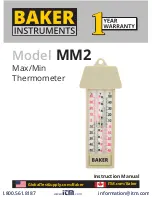
EN1001R0 KO06 2000
!"#$%&'()'&
!"#"$%&'(%)*+,"&'$-./0,1$%$1
2*3"3.''(%)*+,"&'+,)$/,&
*(+!,-"%&*'-).)-/")+0%&1''"
/**2)-/")+0
The DT70 digital thermostats are designed for ON/OFF
control of the valve, or the valve and fan in 2-pipe fan-
coil applications and also one-stage compressors in
DX-type equipment.
The thermostat operates an on/off valve to provide
control at the desired setpoint temperature.
Fan-coil thermostat models are available with constant
or cycled fan operation, and have a three-speed fan
selector switch with low, medium and high settings.
The fan can also be controlled from the thermostat. In
some cases it is wired to run continuously, and can be
switched off with the system ON/OFF switch.
Heat/cool changeover operation is also possible on all
versions. This function can be accomplished by
changing the Heat/Cool parameter in SETUP mode.
.'/",('&
•
Elegant styling with digital display makes
thermostat well harmonised with any interior
decoration of office or hotel
•
Digital display of room ambient temperature, with
display of user selected setpoint on demand
•
Push button adjustment of setpoint
•
Push button setting of Heat/Cool changeover
•
Switches allow manual control of system operation
and fan speed
•
Thermostat mounts directly onto a wall, a standard
65
3
65mm junction box (hole pitch 60mm) or a
85
3
85mm junction box
•
Ability to set minimum relay off-times (heating or
cooling) for applications requiring compressor short-
cycle protection (0~10min.)
•
Ability to set control-off-times for applications
requiring starting-time reservation (0~24hr.)
•
Ability to display temperature sensor failure for
easier troubleshooting
•
EEPROM permanently retains user settings in the
event of power loss
•
Suitable for use with Honeywell VC4000/VC6000
series and V4043/V4044 valves and compressor
starters/relays up to 2A full load rating
Contents
Application ………………………………………………… 1
Features …………………………………………………… 1
Specifications ……………………………………………... 2
Installation …………………………………………………. 3
Wiring diagram ……………………………………………. 4~5
Operation ………………………………………………….. 6
























